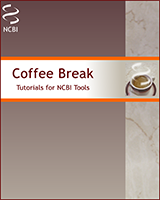NCBI Bookshelf. A service of the National Library of Medicine, National Institutes of Health.
Dean L, McEntyre J, editors. Coffee Break: Tutorials for NCBI Tools [Internet]. Bethesda (MD): National Center for Biotechnology Information (US); 1999-.
Tuberous sclerosis complex (TSC) affects as many as 1 in 6000 newborns. Although named in 1880 for the firm, potato-like nodules that form in the cerebral cortex, few organs escape the benign tumors called hamartomas that also sprout in the kidneys, lungs, heart, eyes, and skin. The first clinical signs of TSC include seizures, mental retardation, and skin lesions. However, symptoms can be so subtle that they go undetected for many years.
One-third of TSC patients inherit a defective copy of either the TSC1 gene (chromosome 9q34) or the TSC2 gene (chromosome 16p13.3). The remaining two-thirds acquire the disease by spontaneous mutation of either gene, probably very early in embryonic development. Because no individual lacking functional copies of both genes has ever been found, it is believed that such a condition is lethal to the embryo.
The product of the TSC1 gene, hamartin, shows no overall sequence similarity to any known protein, although it contains an extensive coiled-coil region near its carboxyl end. Coiled-coil domains often provide a binding surface for protein-protein interactions. The TSC2 product, tuberin, is also novel but shows homology to the GTPase-activating protein (GAP) for Rap1 protein, a Ras superfamily member. Rap1's cellular function is not known, however, many Ras-related proteins help to pass stimulatory signals, from the plasma membrane to the nucleus, that tell a cell when to divide. The GTP-dependent proteins within these signaling cascades can only transmit a signal when in a GTP-bound state. The role of the GAP is to inactivate the signaling protein by hydrolyzing its bound GTP to GDP. GAPs are therefore critical negative regulators of the Ras-like proteins and thus prevent cells from dividing unchecked.
The discovery last year of TSC1 and TSC2 homologs in Drosophila strengthens the idea that they are fundamental to cell division control. Mutant flies lacking tuberin possess enlarged cells that contain on average ten times the normal amount of DNA, indicating that the cells repeatedly replicated their DNA without going through intervening cell divisions. A similar process may explain the giant, multinucleated cells seen in certain neuronal tumors of TSC patients. In addition, experiments in human cells have shown that when tuberin protein levels are reduced, the cells prematurely enter the cell division cycle.
What about hamartin? It may be telling that TSC1 patients are clinically indistinguishable from TSC2 patients. One idea is that tuberin and hamartin bind to each other in cells, facilitated by hamartin's coiled-coil domain. Perhaps hamartin is there to keep tuberin fully active, or the tuberin-hamartin complex itself is the functional tumor suppressor. Although the precise cellular actions of tuberin and hamartin remain to be discovered, the strongly homologous proteins found in Drosophila offer the potential for further experimental investigation.
Search PubMed for the outcomes of surgery
Created: July 27, 2000
Click on the link below to start an html tutorial.
Outcomes of surgery for TSC
Use BLAST to search for proteins similar to human TSC2
Created: July 27, 2000
Click on the link below to start an html tutorial.
Search for proteins similar to human TSC2
- OMIMRelated OMIM records
- Tuberous sclerosis complex in flies too? - Coffee BreakTuberous sclerosis complex in flies too? - Coffee Break
Your browsing activity is empty.
Activity recording is turned off.
See more...

